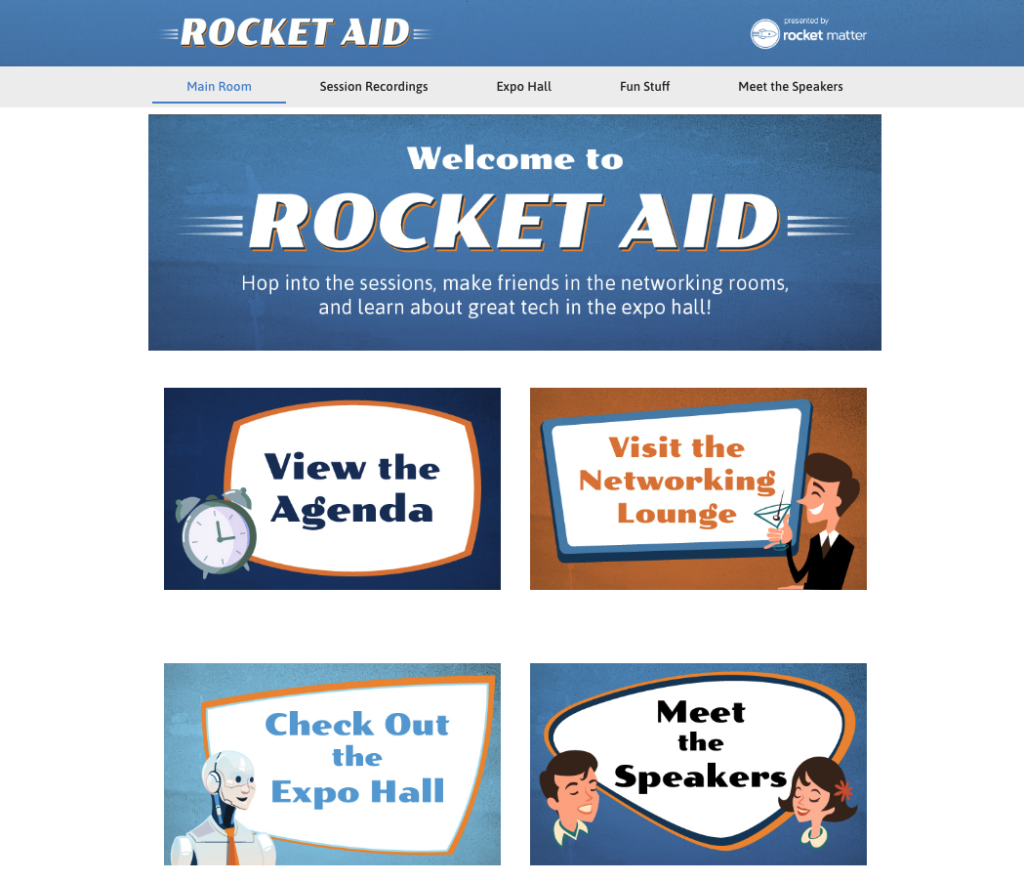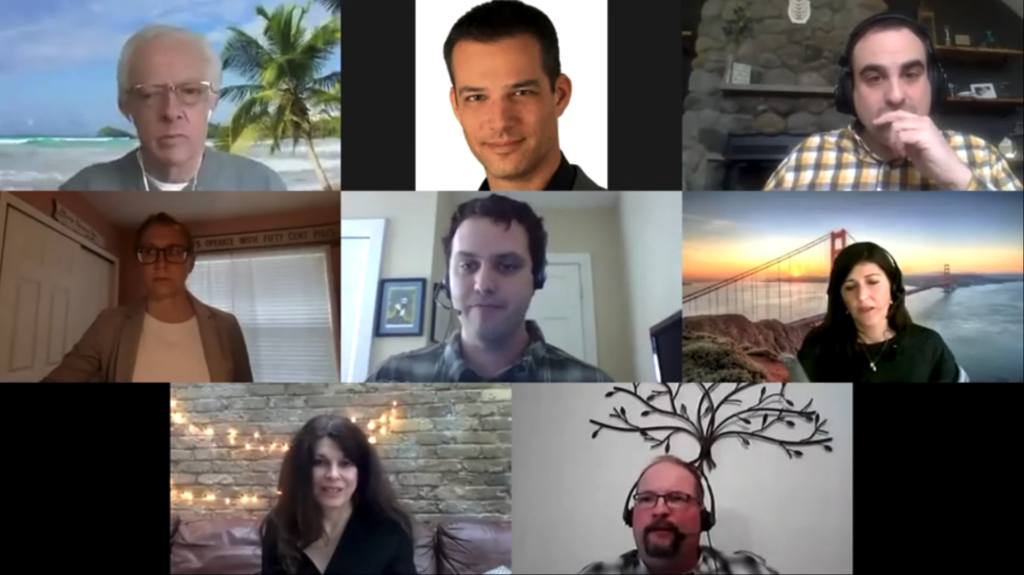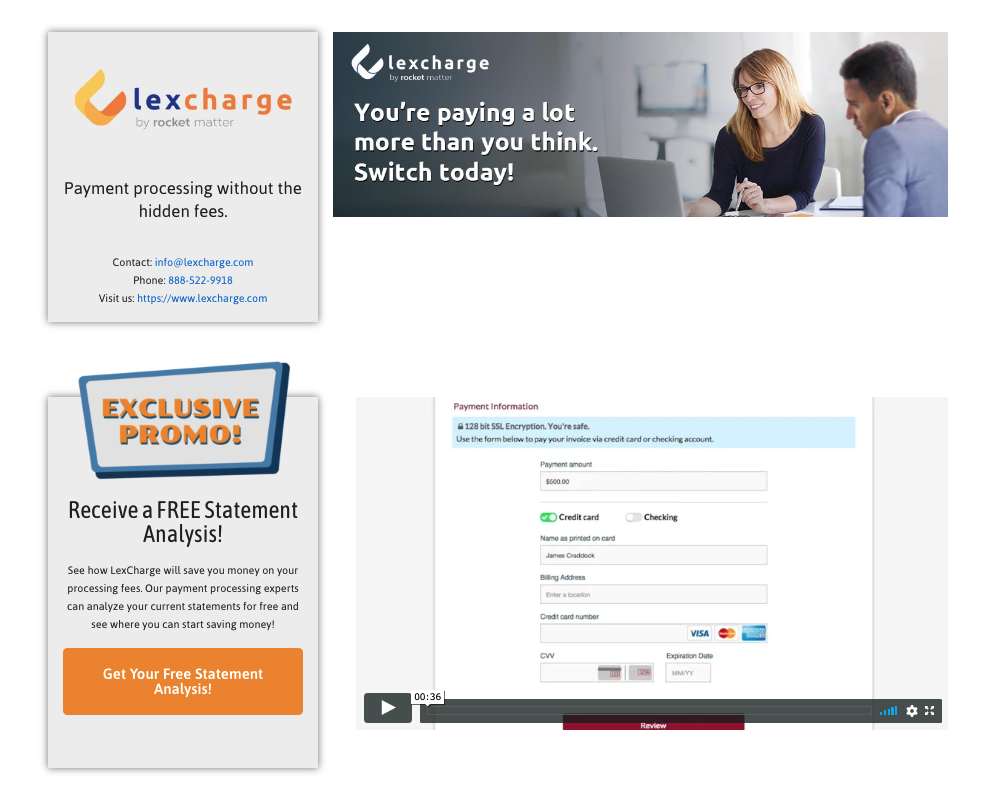Top 10 Things to Consider When Planning a Virtual Conference


Last week we pulled off a highly successful virtual conference, Rocket Aid. Nearly 500 attendees each paid $25 for a ticket to hear more than 30 speakers. We received dozens of high-profile press mentions. Half a dozen sponsors populated our expo hall. And in the process, we raised more than $22,000 for COVID-19 related charities.
Oh – and I forgot to mention – we put Rocket Aid together in three weeks.
As the conference organizer, my primary goals were threefold:
1. Explore this new medium and discover what works and doesn’t.
2. Provide the best possible experience I could for our attendees.
3. Get a minimum of 200 attendees and raise as much money for charity as we could.
We succeeded on all three fronts: We tried out a series of new tools and platforms. We created a vibrant online destination and a fun couple of days (and based on the feedback we received and the fact that the conference earned an NPS score of 95, our attendees loved it.) And for our numeric goals, we hit a home run.
So here are my takeaways and tips for anyone considering hosting a virtual online conference:
Use technology that attendees and speakers are familiar with.
First things first, we needed to figure out how we were going to actually pull off this conference. The last thing I wanted the day of the conference was to have a massive tech-support operation, so we evaluated platform after platform for virtual conferences. However, at the end of the day we decided to build our own platform— a dynamic WordPress website to list sessions and speakers, house the expo hall, and host networking rooms. We used Zoom Webinars for the content, since everyone knows how to use Zoom, both on the speaker and attendee side. For a virtual conference, Zoom offers reliability and predictability.
In the spirit of trying out tools and allowing our attendees to tinker, we did experiment with other video conferencing tools as well: UberConference for the trade show booths and Jitsi for the networking lounges.
When the conference launched, we used Skype Web and Google Hangouts for two of the conference rooms, but by mid-day on the first day we replaced these with Jitsi because they were so problematic for our guests.
Orient the attendees through a cohesive signage and user experience.
Since we were using Zoom for the speakers and content, we needed a way to direct our attendees to the networking lounges, expo hall, and conference agenda.
Most virtual conference software organizes an online space for you. But since we built our own site, we created a page for the areas of the conference and had clear navigation. In the spirit of less is more, our conference was quite simple, with a Main Room, Session agenda, Expo Hall, Networking Room, a catch-all tab called Fun Stuff, and a speaker bio page.

Our Sessions page also encouraged people to hop into the sessions thanks to a big orange “Join Session” button.
To make things more convenient, we configured a plugin to announce, as a banner atop of every page, what session was currently live. This allowed guests to easily enter the current session without having to scroll through the agenda. We added a chat widget to help people who had questions.
And to prevent people from losing track of time, we simulated those “conference chimes” that warn when the next session is about to start and added a popup that took over the site to warn people when the next session was imminent.
Pick the right speakers.
How do you lose an online audience quickly? Boring, monotone speakers. Critical to any conference, live or virtual, are good speakers who deliver insightful, colorful talks.
I have the luxury of being friends with great speakers because of my time running Rocket Matter. Many are big names in legal technology: A large number of them are published authors and most have presented at ABA TECHSHOW or some of the other major venues.
The Rocket Aid faculty were such professionals that I knew they would all be prepared, on time, and not fumble around with their audio or video settings come showtime. When you’re planning a conference with three weeks lead time, relying on aces who can step up and deliver on cue is critical.
Not only were my speakers great content providers, they were also comfortable with the presenting technology which made their talks dynamic. They were able to present their materials, scan the chat room for questions, and incorporate comments and questions into their talks in real-time.
The audience loved the thought-leadership of our speakers. The high marks for the conference were in part due to the organization and interactivity we provided, but it was really about the content.

Unify the conference around a singular theme.
A virtual conference cannot just be a sequential series of webinars. Like an in-person conference, an online one benefits from an overarching theme that allows each session to find its place in a bigger picture.
A theme allows for consistent branding, visuals, and commentary from the emcee and speakers. It gives the conference some depth that can anchor the ideas presented and discussed.
For Rocket Aid, for example, the whole focus was on helping law firms thrive in an evolving world with new technologies, wellness techniques, and business strategies. We emphasized the notion of experimentation: The COVID-19 lockdown is so extreme and radical that, within ethical boundaries, you have total license to try new things without penalty.
Have your sponsors speak.
Some legal venues have strange rules about allowing vendors to speak. This is a big mistake. Yes, there is the risk that undisciplined speakers will hawk their wares from the podium. But often, vendors have the most in-depth knowledge on specific topics.
It’s tough to get people on an expo floor at live conferences, let alone virtual ones. At least during in-person conferences, people are lured by vendors who give away pens and cheap toys, or by cocktail hours which force booth traffic.
With a virtual conference, we knew this was going to be a challenge. In spite of our time designing the virtual expo booths to make them pretty and dynamic, and in spite of special deals to entice visitors, getting people to the expo hall without the promise of free pens or booze was tricky.
The solution was a win-win-win: We ensured that as many sponsors could talk as we could fit into the schedule. Alvin Tedjamulia from NetDocuments put on an amazing session on remote security with Adriana Linares. Craig Walker and his team from Dialpad discussed modern telephony systems.
The attendees received world-class information, the sponsors received exposure, and Rocket Aid benefited from the sponsors’ participation.

Vary the session length.
The standard talk for our industry is 50 minutes, which historically is tied to one hour of continuing legal education (CLE) credit. Intuitively, to me that seemed like too much time to expect an audience to focus on an online talk.
Instead, we experimented with 30-minute sessions and 6-minute sessions in addition to the 50-minute blocks. This worked out well because it kept the content dynamic and moving. Variety is essential in this medium, in my opinion. Plus, a major side benefit of shorter sessions is that you increase the number of faculty who can both assist with and promote your conference.
Use an emcee, ideally two.
A virtual conference is like a long, interactive telecast. It’s similar to the Olympics in a way, which takes place in various locations and is so sprawling that without direction, the viewer can feel overwhelmed.
It helps to have an emcee to give the sessions a sense of structure, provide a little levity between sessions, and direct the guests to the networking lounges and exhibit halls. There are a couple of requirements, however: The emcee has to be able to smoothly manage the sessions and the webinar software while they entertain at the same time.
For Rocket Aid, I was our de facto emcee. I also made it a point to interact with the attendees during the live session by participating in the chats, sending out links to resources the speakers mentioned, and answering questions as best I could.
Next time I do it, however, I will enlist a co-host, which would allow us to switch off sessions and play off one another when on camera at the same time.
Make it as interactive (and fun!) as possible.
If people are going to participate in your conference from the isolation of their home or their office, then the conference cannot be simply a one-directional broadcast. You have to reach out and pull the participants in, and there’s a number of great tools that will help you do that.
I’m a huge fan of Kahoot, and as it turns out so were Rocket Aid attendees. Kahoot allows you to host an online quiz competition, where you ask questions and the quickest and most accurate respondents make it to the podium.
Zoom also has a “breakout room” feature, where you can manually or automatically assign your audience into small groups who can chat face to face. These work well when paired with discussion points. We only experimented with breakout rooms during the “happy hour” part of the conference, but it worked remarkably well.
Zoom’s polling functionality, which is a common feature among webinar software, makes sessions much more engaging. You’re able to say things like “If you’re not looking at the screen right now, c’mon back over and help us out with this poll.”
Our networking lounges worked well: Our speakers would enter them after their talks to answer further questions, and after the programming each day, we had a couple of dozen people want to stay and discuss takeaways. The lounges were powered by Jitsi, an open-source video platform (Jitsi is the same video conferencing platform built into Rocket Matter’s Communicator chat tool).
Make sure attendees can chat publicly during the sessions.
I had a hunch that public chatting would be important and steered our investigations toward a platform that could accommodate this functionality.
Boy, was this a good hunch! I had no idea how much energy it would give the conference. The chats, during the conference, were very lively. In fact, during my session with my co-author Dave Maxfield, the chat became something of a mosh pit.
The speakers were able to react to the conversations among the audience members in real-time. Instead of having to track hash-tags on Twitter to capture tidbits, they were taking place right there inside the conference.
Open the conference in style.
It was important to me to start Rocket Aid off with energy and on a positive note. I wanted to capture attention, but the trick was, people don’t arrive at virtual conferences all at the same time.
In ten years of webinar hosting, I always notice some people arrive early and more arrive late. This begs the questions: “Should we actually start our conference on time?” and “If people arrive early, are they going to be looking at a blank screen?”
What we decided to do was open up the broadcast 15 minutes early and play YouTube videos that put people in a good mood. In a nod to the COVID-19 fundraising we were doing, on day one we played “We are the World” and “Radio Ga Ga” from Live Aid. On day two, we just showed scenes from movies people commonly love such as the disco scene from Airplane and the Johnny B. Goode scene from Back to the Future.
Then when we opened the conference, we played a modified version of the Star Wars opening, complete with the crawl, playing on the rocket/space theme:
Share post:







